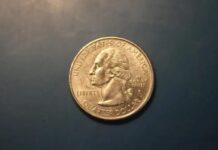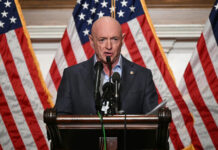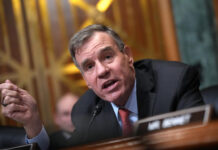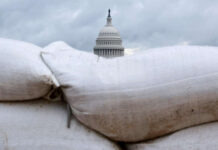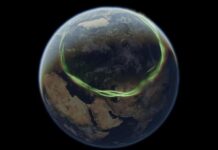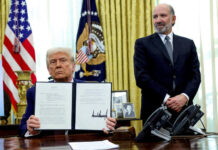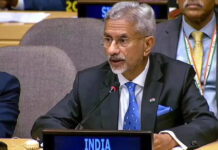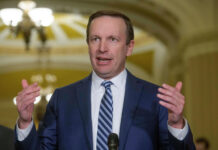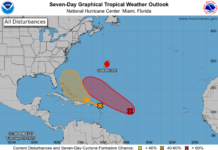November 13, 2014
DENVER — Federal officials say their decision to protect dwindling Gunnison sage grouse populations in Colorado and Utah has no bearing on next year's highly anticipated ruling on the far more widespread greater sage grouse — but advocates on both sides already are placing their bets.
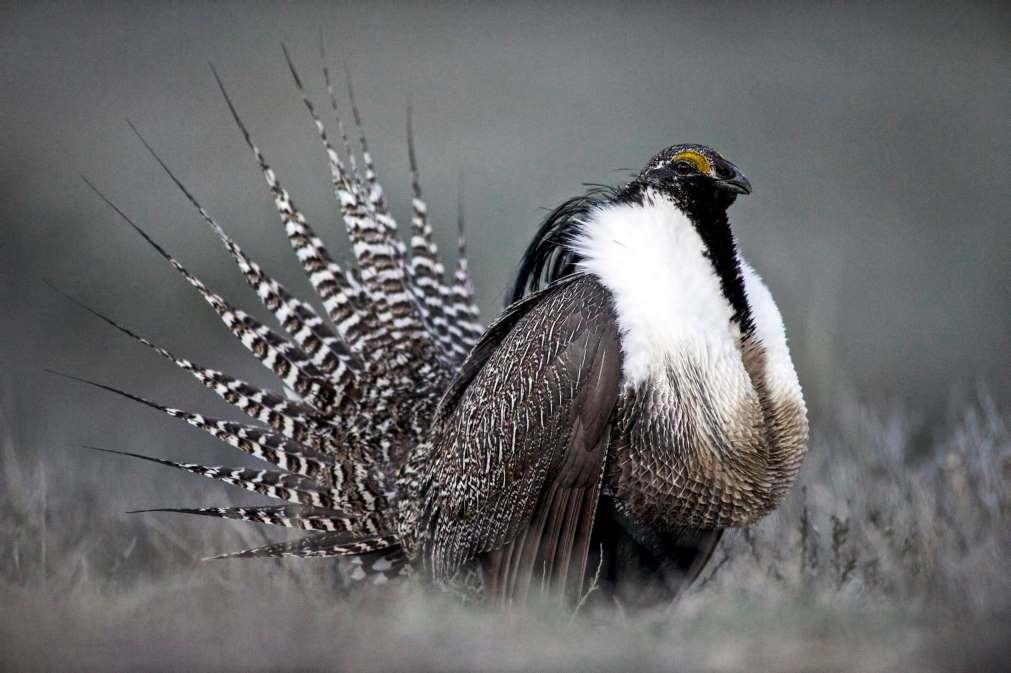
November 13, 2014
DENVER — Federal officials say their decision to protect dwindling Gunnison sage grouse populations in Colorado and Utah has no bearing on next year's highly anticipated ruling on the far more widespread greater sage grouse — but advocates on both sides already are placing their bets.

This April 2014 photo provided by Colorado Parks and Wildlife shows a Gunnison sage grouse with tail feathers fanned near Gunnison, Colo. Federal officials are preparing to announce whether the Gunnison sage grouse will be protected under the Endangered Species Act, which could restrict oil and gas development and other land use in Colorado and Utah.
"I think that this does not bode well for the greater sage grouse," said Amy Atwood, an attorney for the Center for Biological Diversity. Atwood said she hopes the greater sage grouse will be protected, but she fears the U.S. Fish and Wildlife Service will succumb to pressure from industries that oppose the land-use restrictions that such protection would bring.
Rep. Doc Hastings, the Republican chairman of the House Natural Resources Committee, came to the opposite conclusion. Hastings called the U.S. Fish and Wildlife Service's decision, announced Wednesday, to protect Gunnison grouse drastic and wrong. He said it "foreshadows the intentions of the Obama administration" as it considers protections for greater sage grouse in portions of 11 Western states.
The Fish and Wildlife Service's announcement that it was designating the Gunnison sage grouse a threatened species under the Endangered Species Act means that it could impose limits on oil and gas drilling and other activities, although officials say the potential for energy development in the Gunnison grouse range is limited. About 2,200 square miles will be labeled as critical habitat for the Gunnison grouse. Federal officials decided to protect the Gunnison sage grouse as a "threatened" species, a less restrictive category than "endangered."
The Fish and Wildlife Service faces a court-ordered deadline of September 2015 to rule on the greater sage grouse. That decision could affect development, energy exploration, hunting and ranching across the bird's vast range, which covers 290,000 square miles in California, Colorado, Idaho, Montana, Nevada, North Dakota, Oregon, South Dakota, Utah, Washington and Wyoming.
The greater sage grouse also is found in the Canadian provinces of Alberta and Saskatchewan.
Scientists say the greater sage grouse and the Gunnison sage grouse are related but separate species. About 5,000 Gunnison sage grouse remain in southwestern Colorado and southeastern Utah. The agency estimates the greater sage grouse population at 200,000 to 500,000.
Dan Ashe, director of the Fish and Wildlife Service, cautioned against viewing Wednesday's decision on the Gunnison grouse as a clue to the ruling on the greater sage grouse.
"These are separate species and a much different fact pattern," he said. "I think the Fish and Wildlife Service makes decisions on the facts and the science as we see it in each case."
But Atwood said the agency routinely gives in to political pressure and provides less protection than imperiled species need. Atwood's group filed a lawsuit to force the Fish and Wildlife Service to make a decision on whether to protect the greater sage grouse.
"Pretty much any species where the service confronts powerful political opposition, they are now in the habit of caving and issuing these gutted rules that aren't going to meaningfully protect the species, let alone (help it) recover," she said.
Hastings said the Obama administration is more interested in meeting arbitrary court deadlines than making rulings based on science and facts. Hastings, from Washington state, is retiring after this session of Congress.
Fish and Wildlife Service spokesman Theo Stein declined to respond directly to Atwood and Hastings's criticism, but he noted stark differences between the two grouse populations, including their numbers and distribution.
"We just don't know (what the greater sage grouse decision will be) because we don't have all of the information we need to make our status assessment," Stein said.
Brian Rutledge, a vice president of the National Audubon Society, a bird-focused conservation group, said the Fish and Wildlife Service makes its decisions based on science, not pressure. He expects the same this time.
"Are they always right? I can't answer that," he said. "But I have high expectations. I know the people involved, and I think they will do the very best they can."
Courtesy: AP


